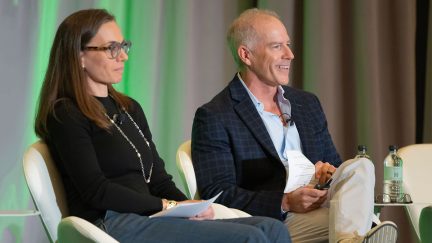For more stories like this, sign up for the PLANADVISERdash daily newsletter.
Americans Support DC Plan System
An Investment Company Institute (ICI) survey shows that one factor behind the strong attitudes of U.S. households favoring the preservation of retirement savings incentives is the fact that households—whether or not they had a defined contribution (DC) plan account—were generally confident in these plans’ ability to help individuals meet their retirement goals.
The study, “America’s Commitment to Retirement Security: Investor Attitudes and Actions, 2013,” by the ICI, found a majority (85%) of the 4,000 households surveyed from November 2012 through January 2013 disagreed with a suggestion to remove the tax incentives for DC plan retirement savings. Opposition to elimination of the tax advantages was the strongest among households with defined contribution accounts (89%), but even 81% of the households without these accounts opposed eliminating the tax incentives.
In addition, about 80% of surveyed households agreed that retirement savings incentives should continue to be a national priority.
A vast majority of households invested in defined contribution plans (about nine in 10) say these plans help them to think about the long term and make it easier to save for retirement. More than three-fifths (63%) of U.S. households have favorable impressions of the 401(k) and similar plan accounts. Most households’ impressions were shaped by the ability of these accounts to accumulate significant savings, the performance of retirement plan account investments and personal experience with such plans.
Responses to the ICI survey further indicated that respondents appreciate the key investment features of DC plans. Eighty-four percent indicated that their defined contribution plan offered a good lineup of investment options. In addition, 96% indicated it is important to have choice in and control of the investments in their retirement plan accounts.
(Cont’d…)
In addition to the annual household survey of attitudes towards retirement savings, the ICI study includes data from plan recordkeepers about contributions, asset allocation, and withdrawal and loan activity in more than 24 million employer-sponsored DC plan participant accounts in the first nine months of 2012.
The recordkeeper data show continued commitment from plan participants to retirement saving: Only 2.1% of defined contribution plan participants stopped making contributions during the first three quarters of 2012. At the end of September 2012, 18.3% of participants had loans outstanding, compared with 18.5% of participants at year-end 2011.
Defined contribution plan participants tended to stay the course with their asset allocations. Nine percent of participants changed the asset allocation of their account balances during the first three quarters of 2012. In addition, 6.5% of participants changed the asset allocation of their contributions between January 2012 and September 2012, down from 8.4% during the first three quarters of 2011.
Only 2.8% of plan participants took withdrawals from their participant-directed retirement plans, with 1.4% taking hardship withdrawals. These withdrawal rates are in line with the recordkeeper results for the first three quarters of 2009, 2010 and 2011.
The survey report is at http://www.ici.org/pdf/ppr_13_retir_sec_update.pdf.
You Might Also Like:

Rethinking Opportunities for RIA Growth

Blackstone Unit to Focus on Private Investments in DC Plans
